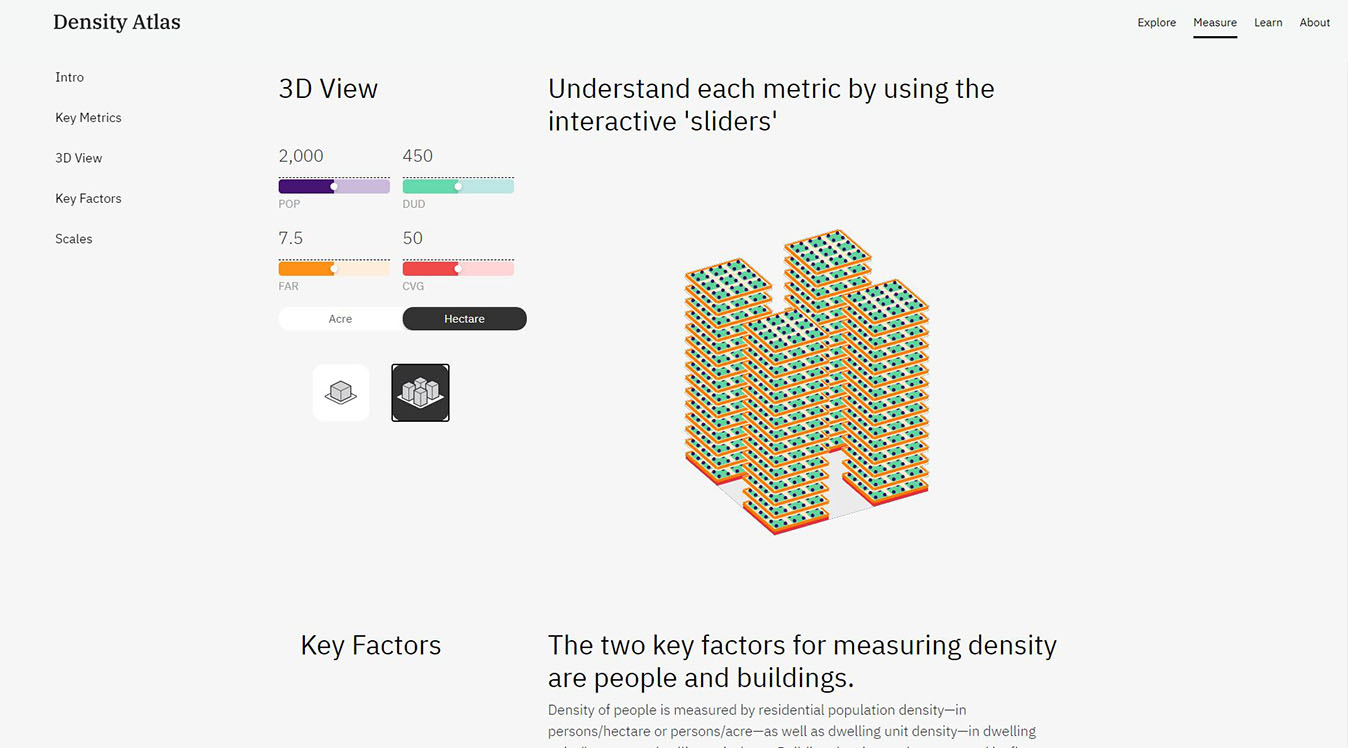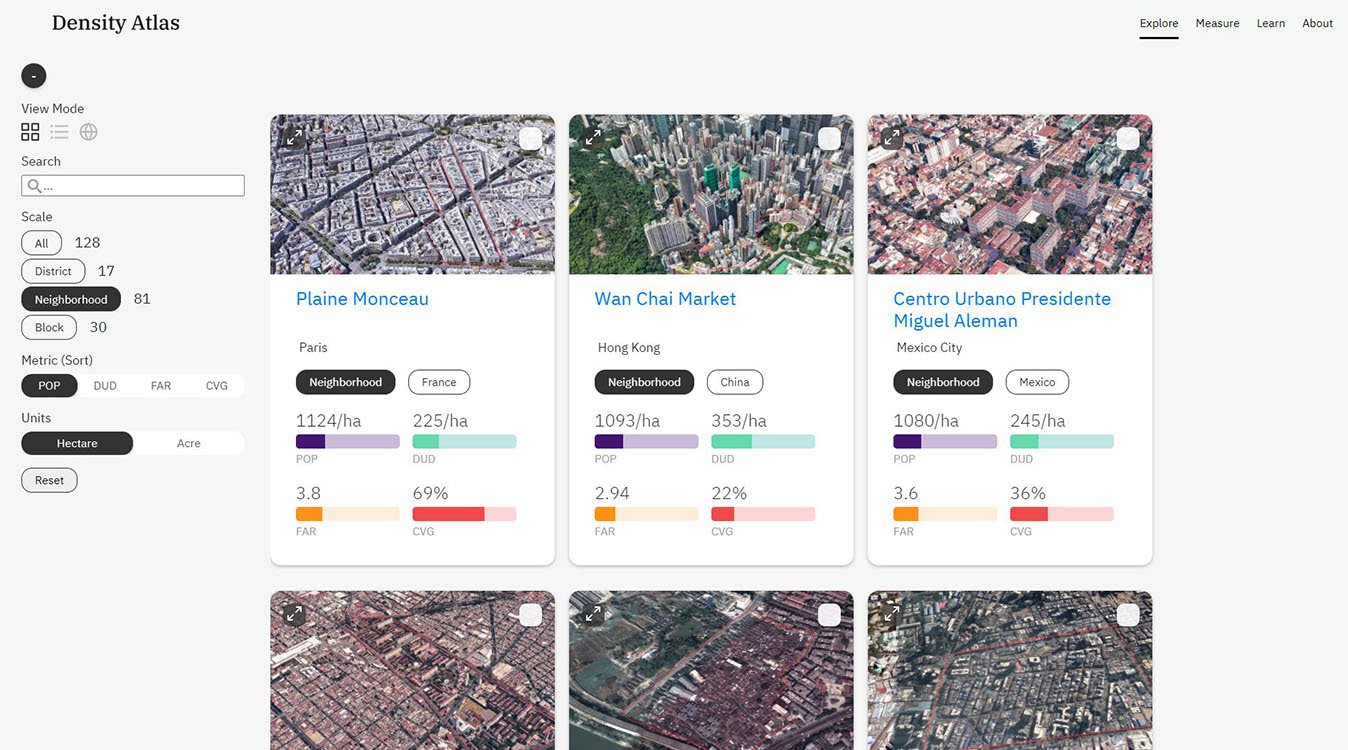Eixample
Barcelona, Spain
The Density Atlas project originated in the Department of Urban Studies (DUSP) at MIT, which in 2019 transferred the project to Sasaki for stewardship and improvement. The Sasaki Foundation provided support in Sasaki’s effort.
With more than 120 case studies, the Density Atlas shows what density can look like in three distinct scales: district, neighborhood, and block. It allows designers to understand the implications of population, building footprints, and urban design in residential densities across the world, informing decisions regarding our built environment.

The New Density Atlas
Sasaki’s recent work to improve the tool, with support from the Sasaki Foundation, resulted in a fully redesigned website with expanded capabilities for exploring and comparing case studies. Future enhancements will include new visualizations and the ability to crowdsource new cases from within Sasaki.
The new DensityAtlas.org launched in spring 2021.
The Density Atlas project originated in 2015 with Tunney Lee, who was a professor in the Department of Urban Studies (DUSP) at MIT. He, along with students and alumni, developed the Density Atlas after struggling to define density for specific developments. In their research and search for precedents, they found most studies focused on density at the city and district scales, but few at the neighborhood level. Also, the varying metrics and scales used by each study generally led to ill-informed comparisons and conclusions. In response, the Density Atlas provides standard metrics to view density at three distinct scales.
Learn more about the 2015 mini exhibition.

Sasaki with support from the Sasaki Foundation
